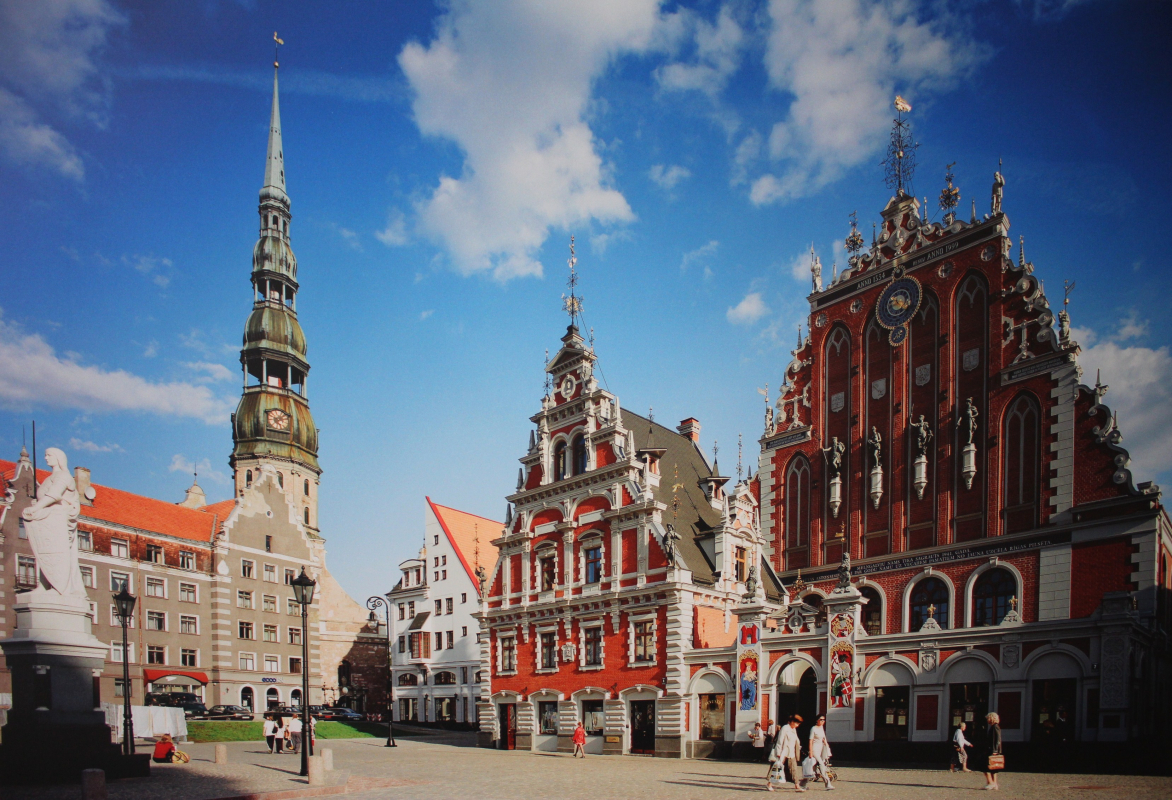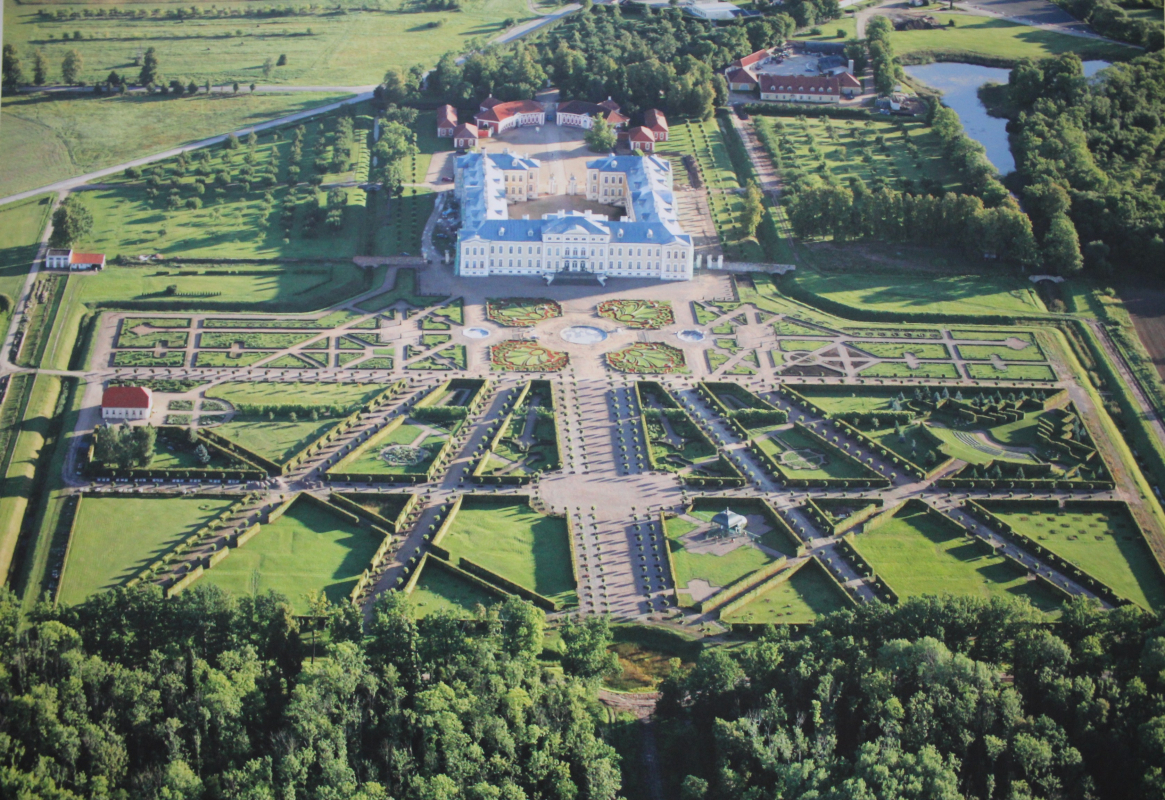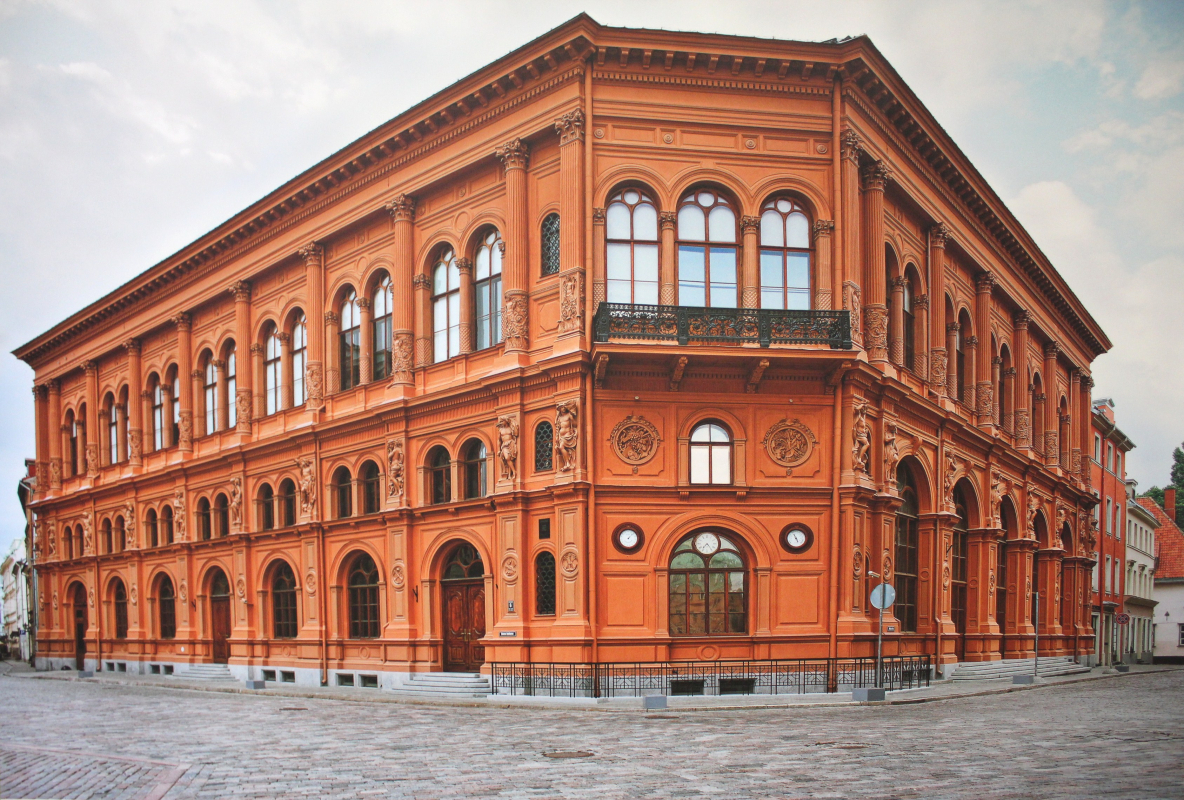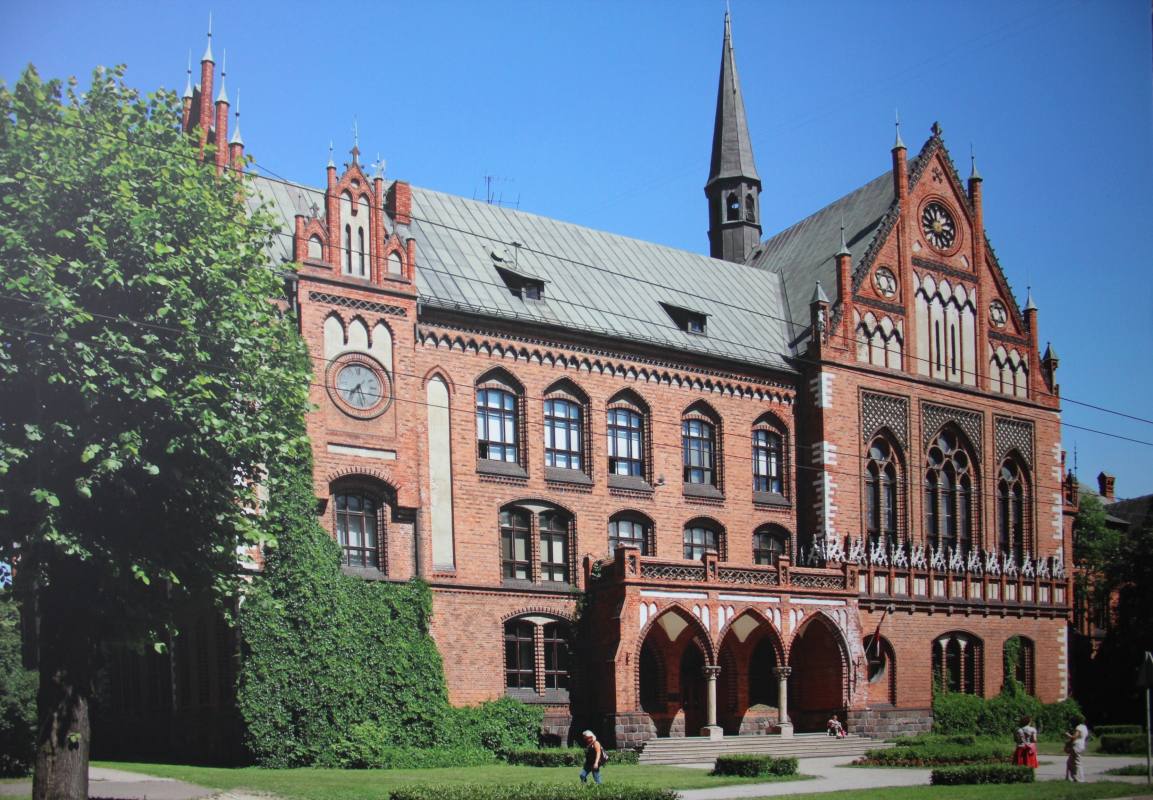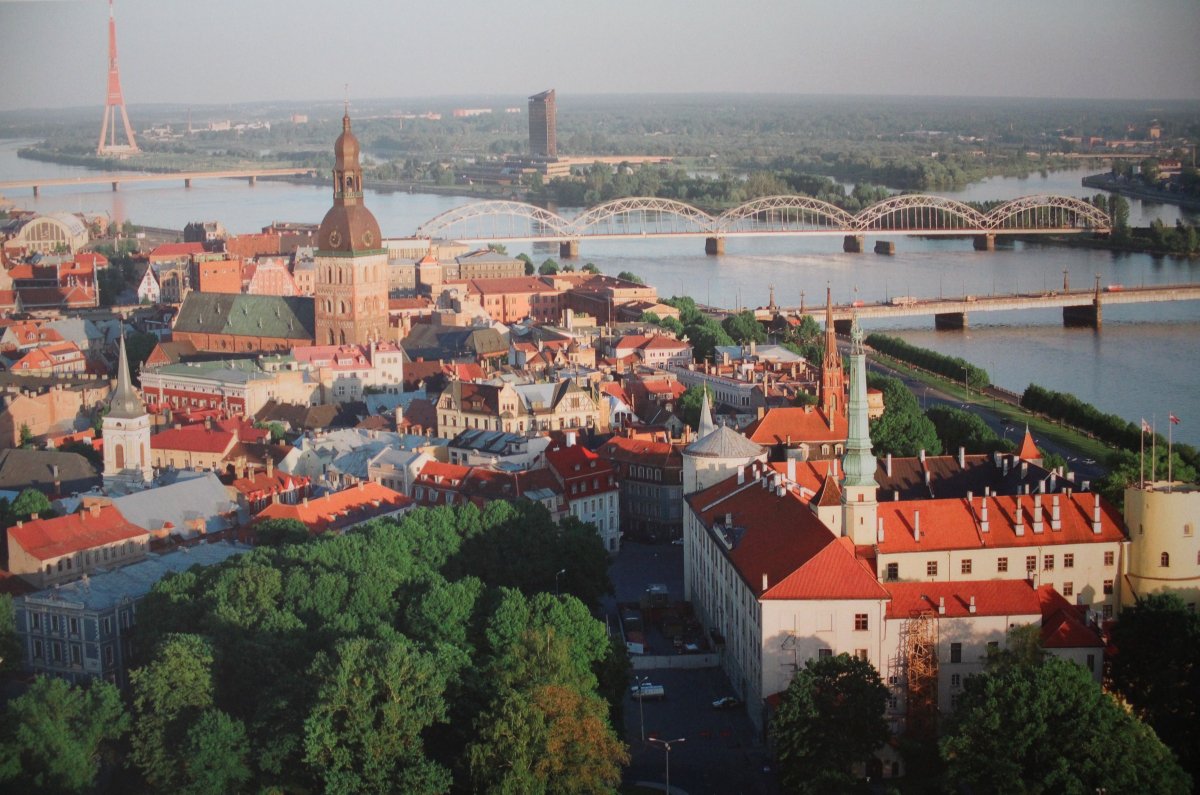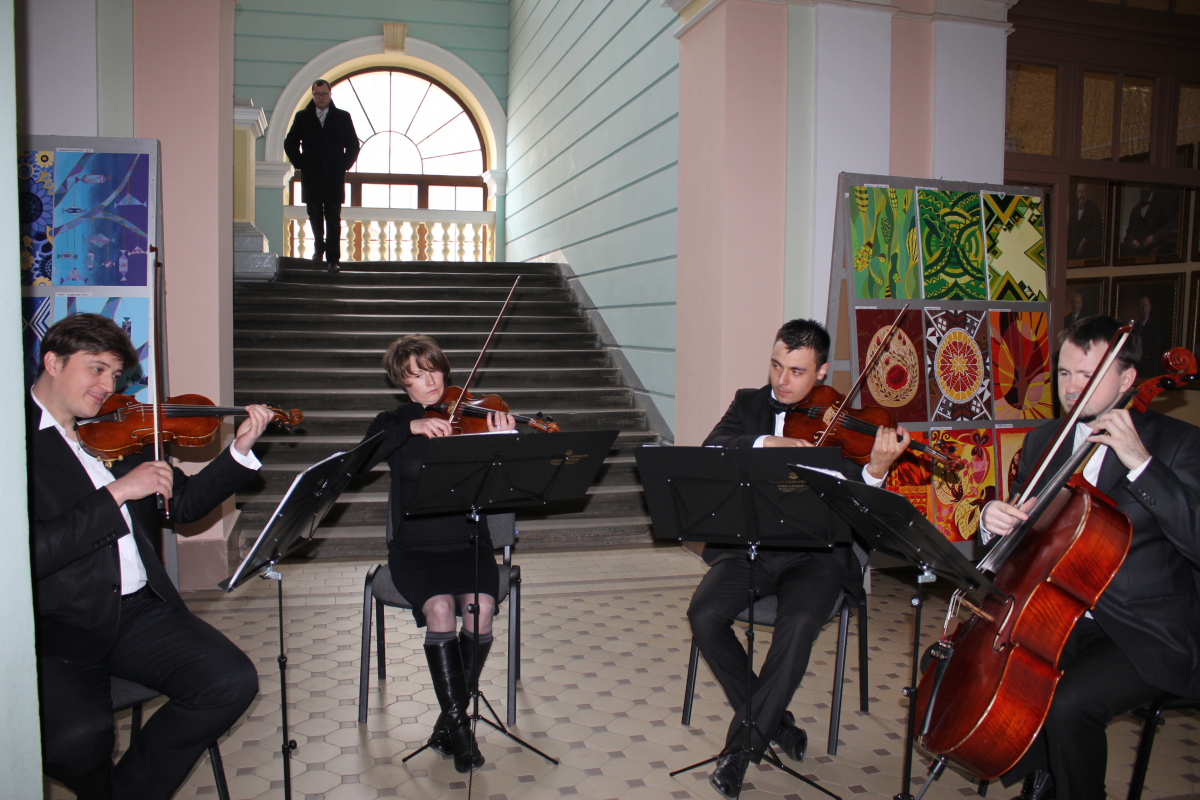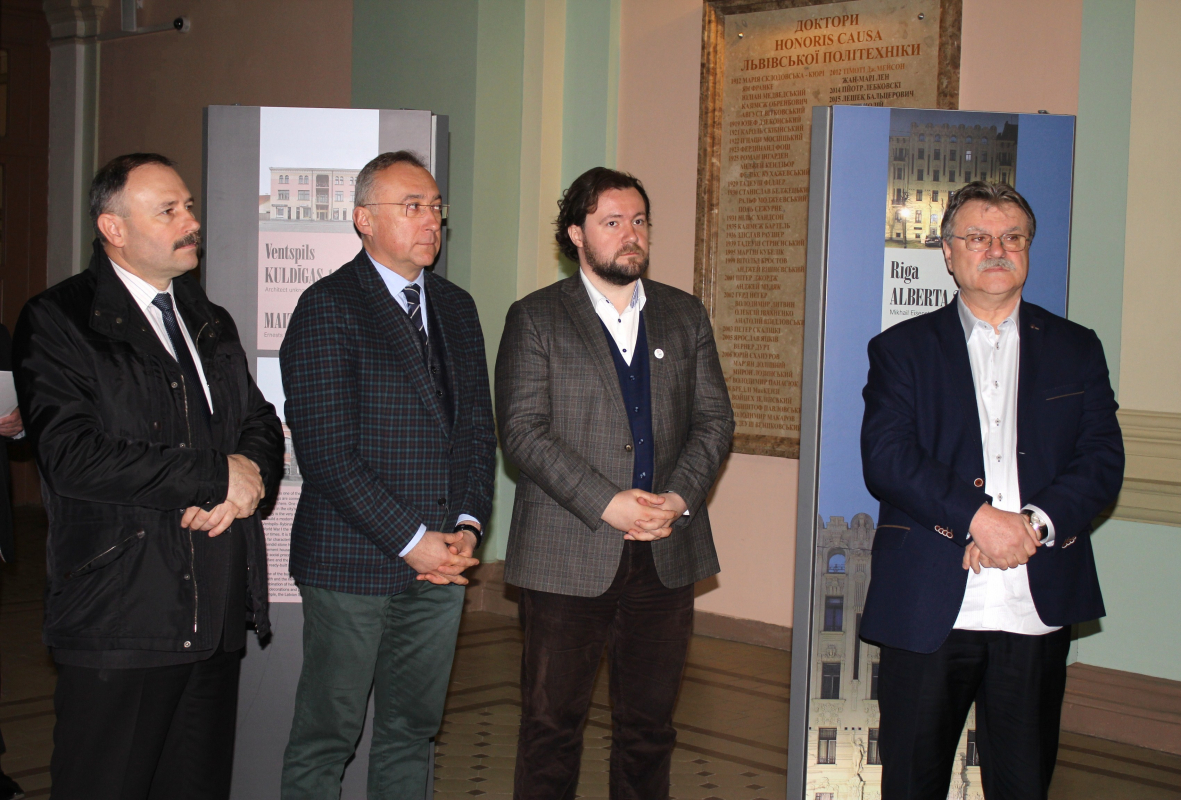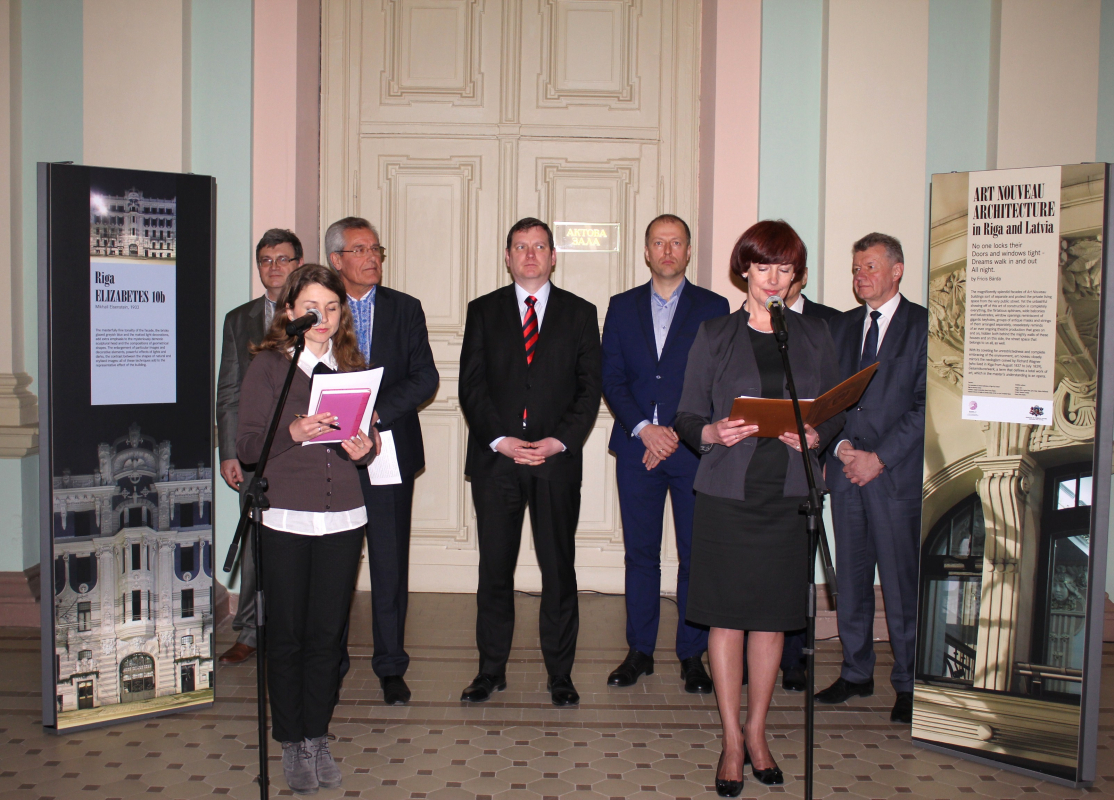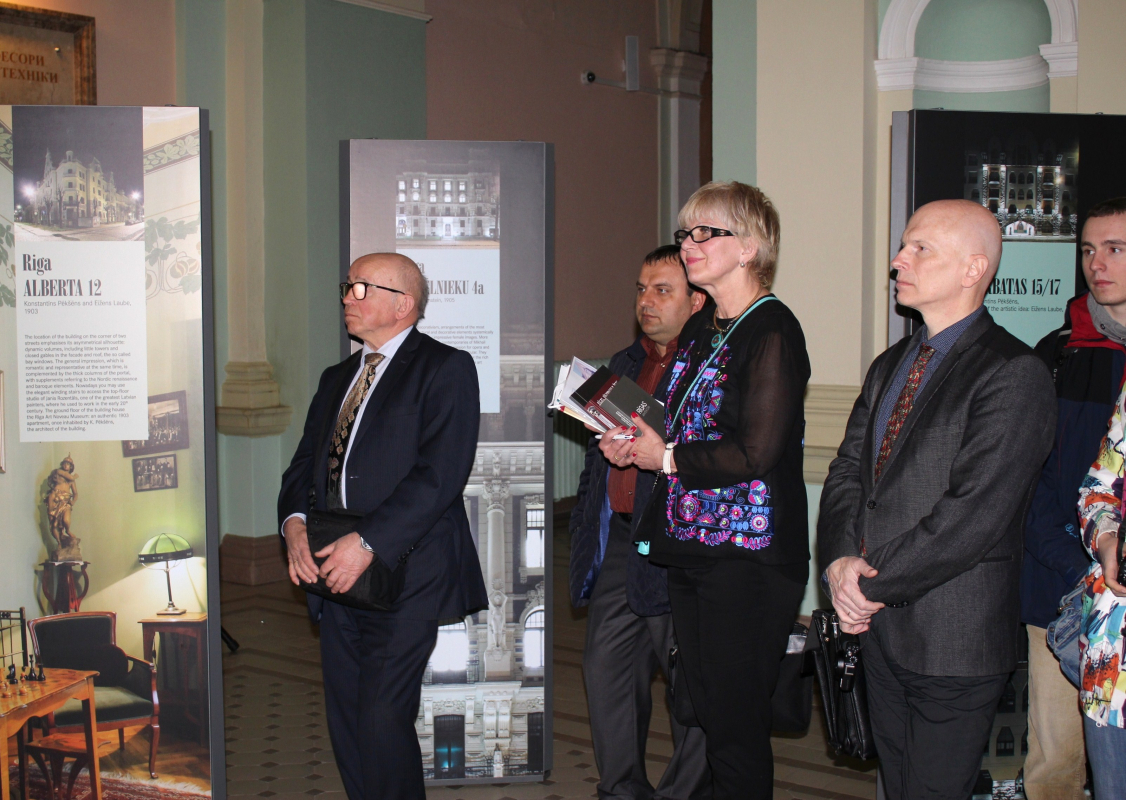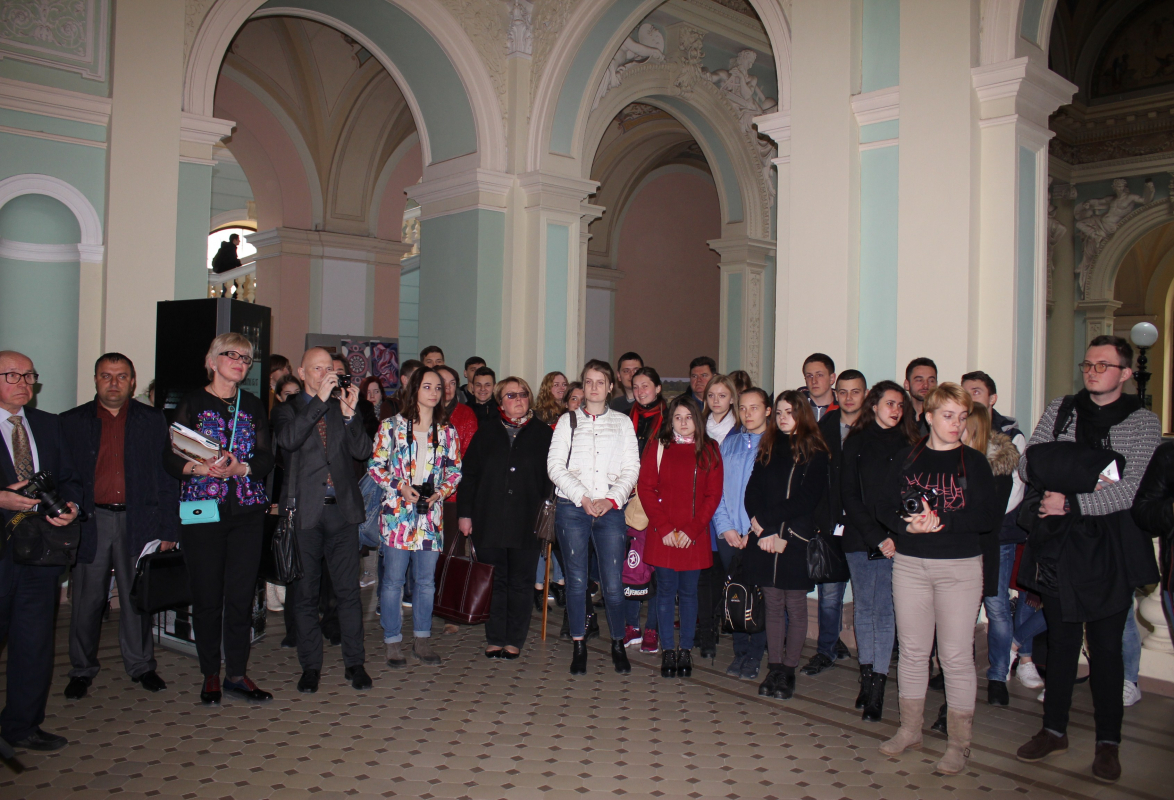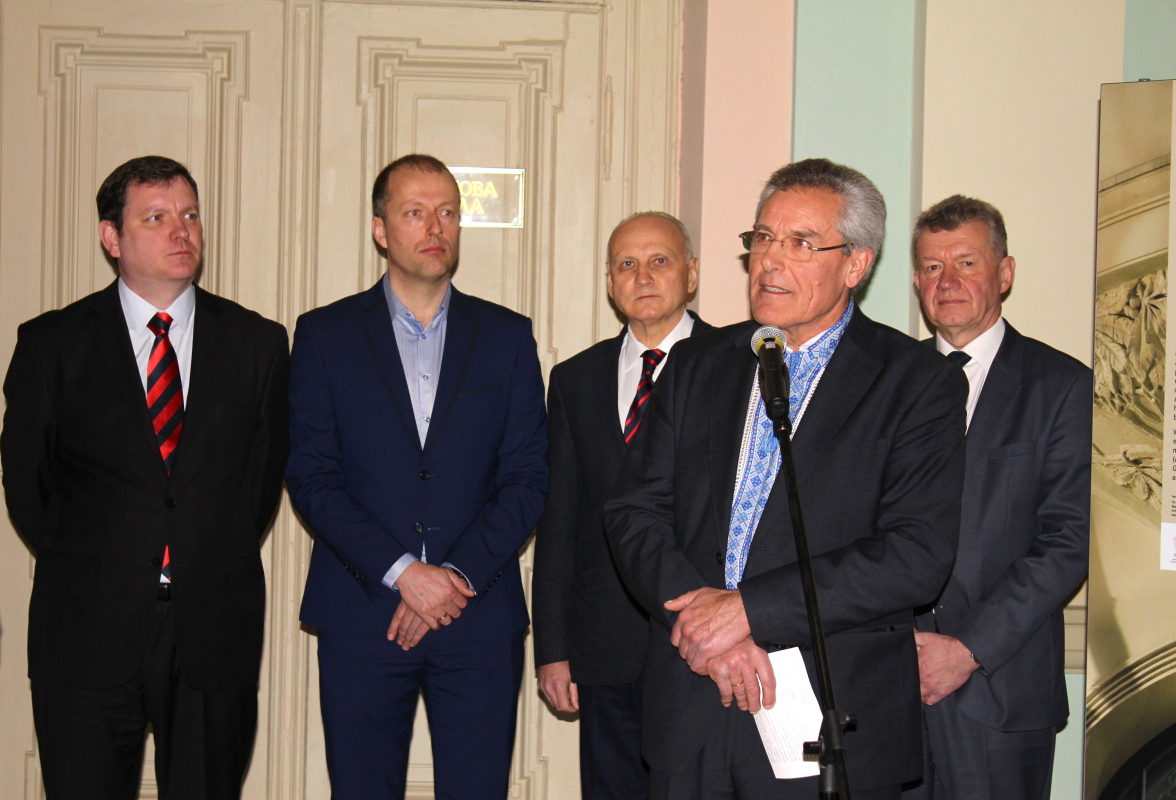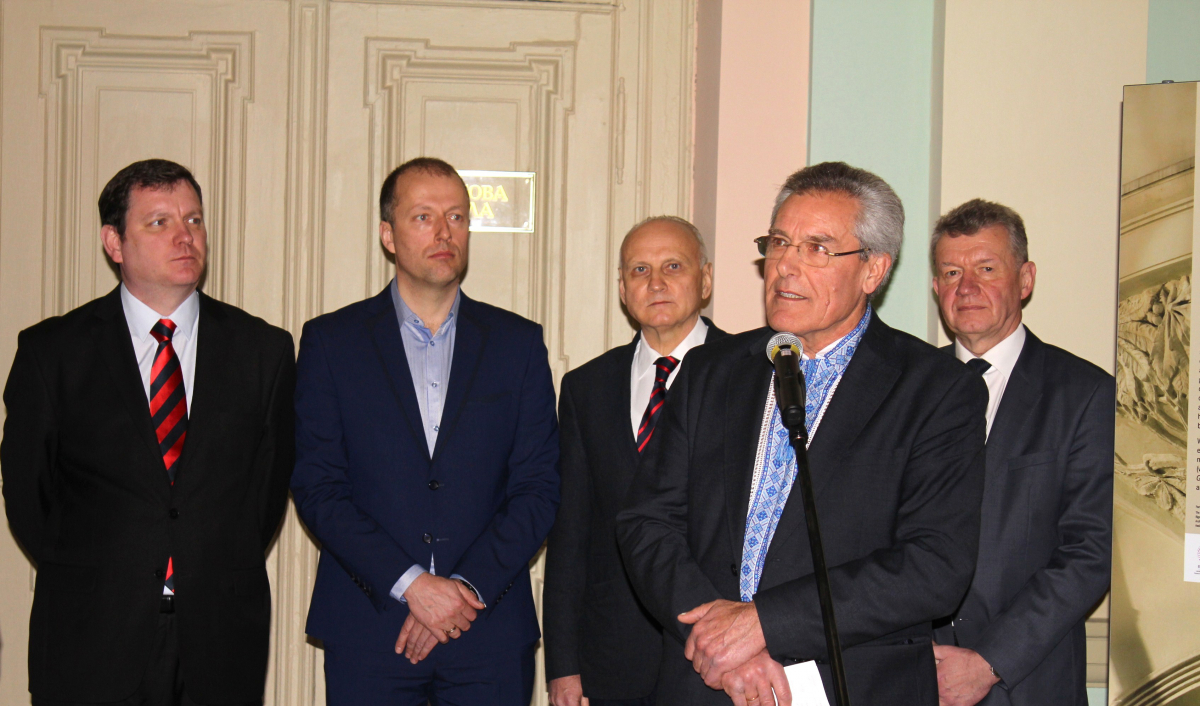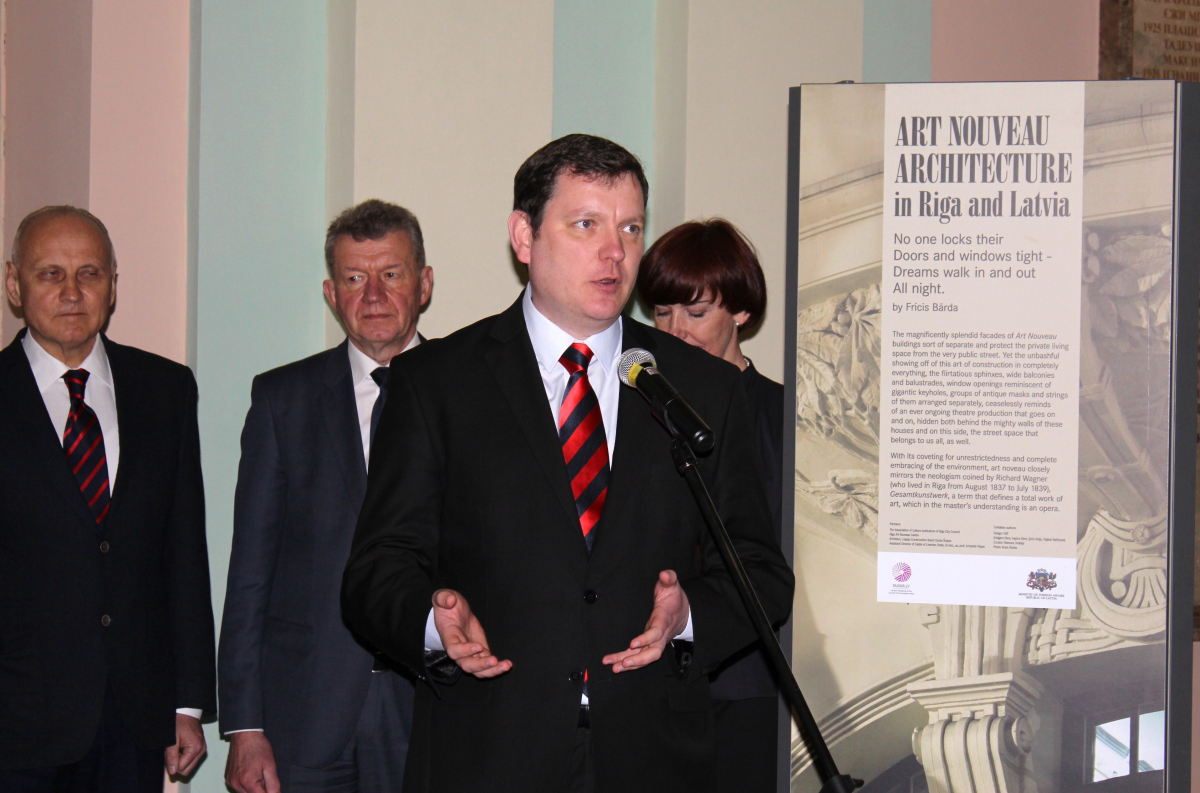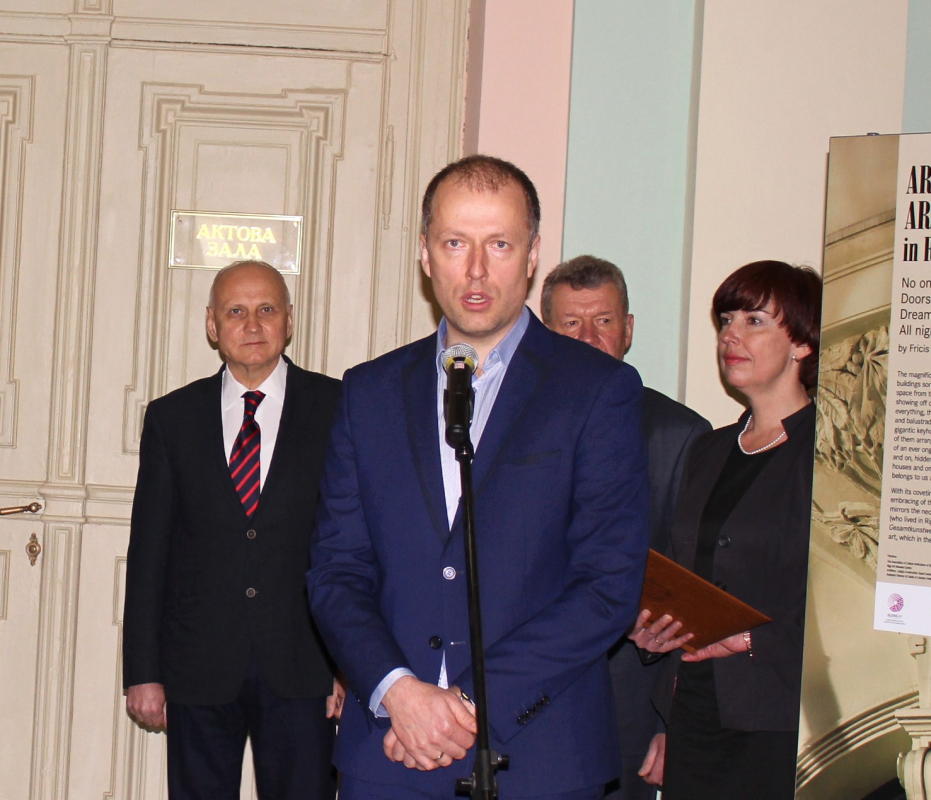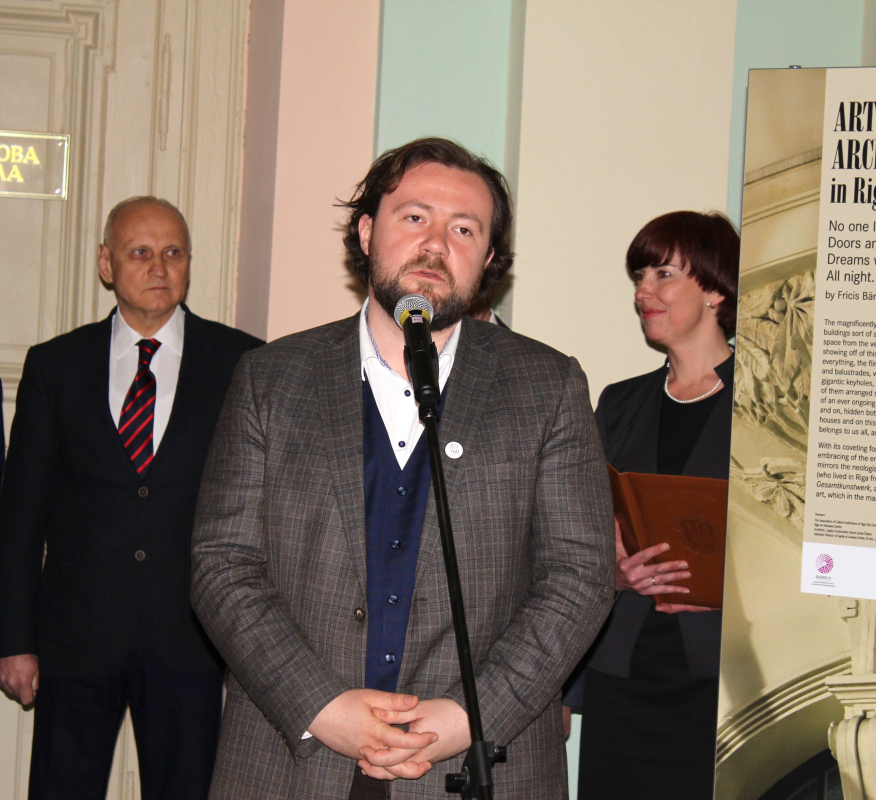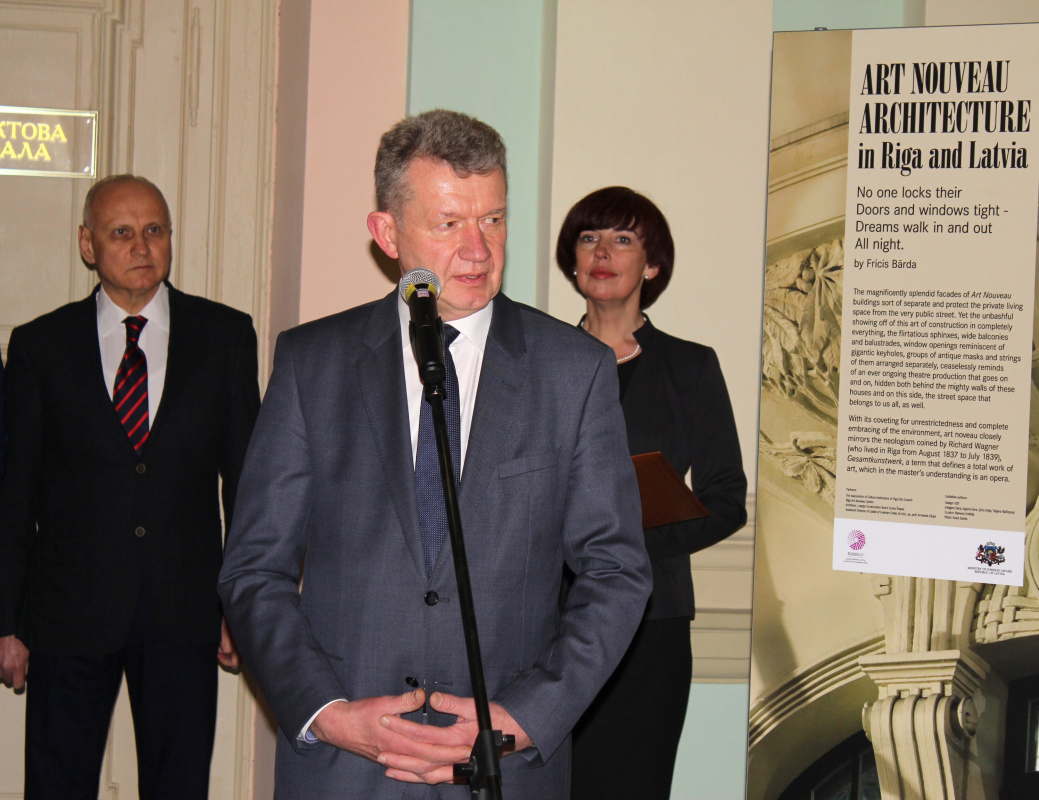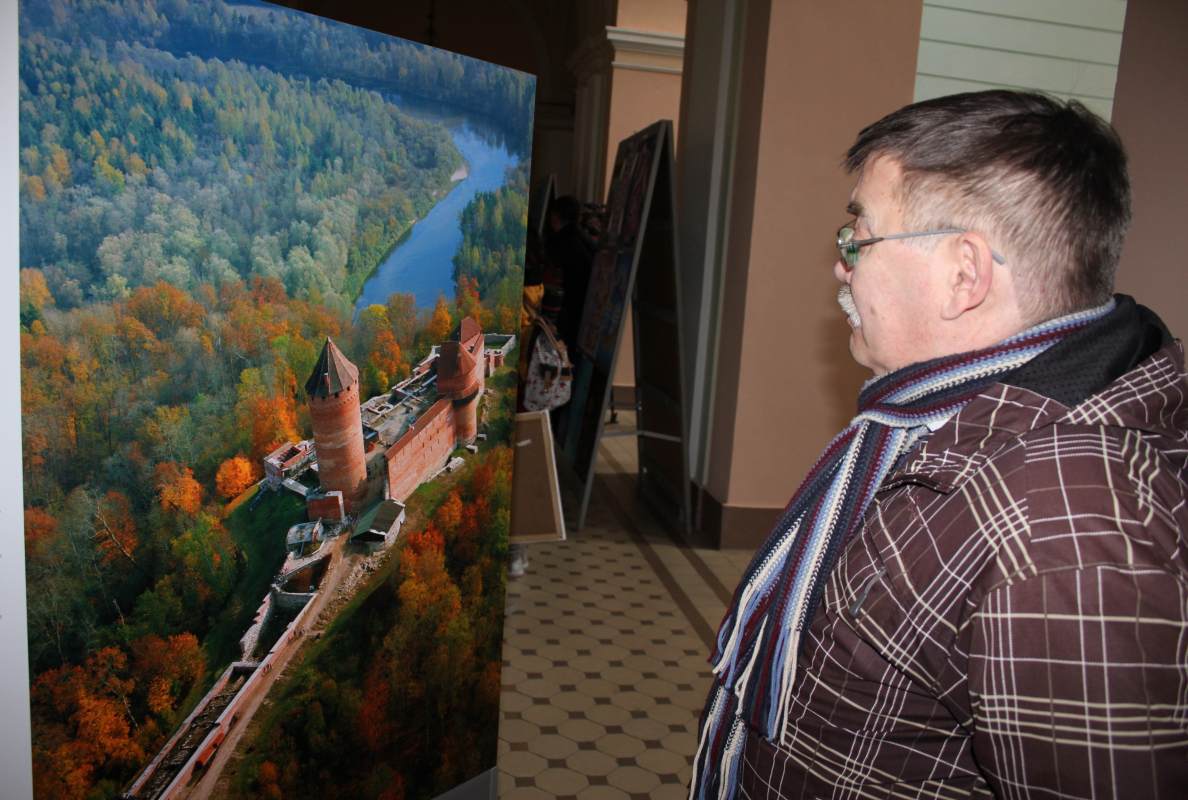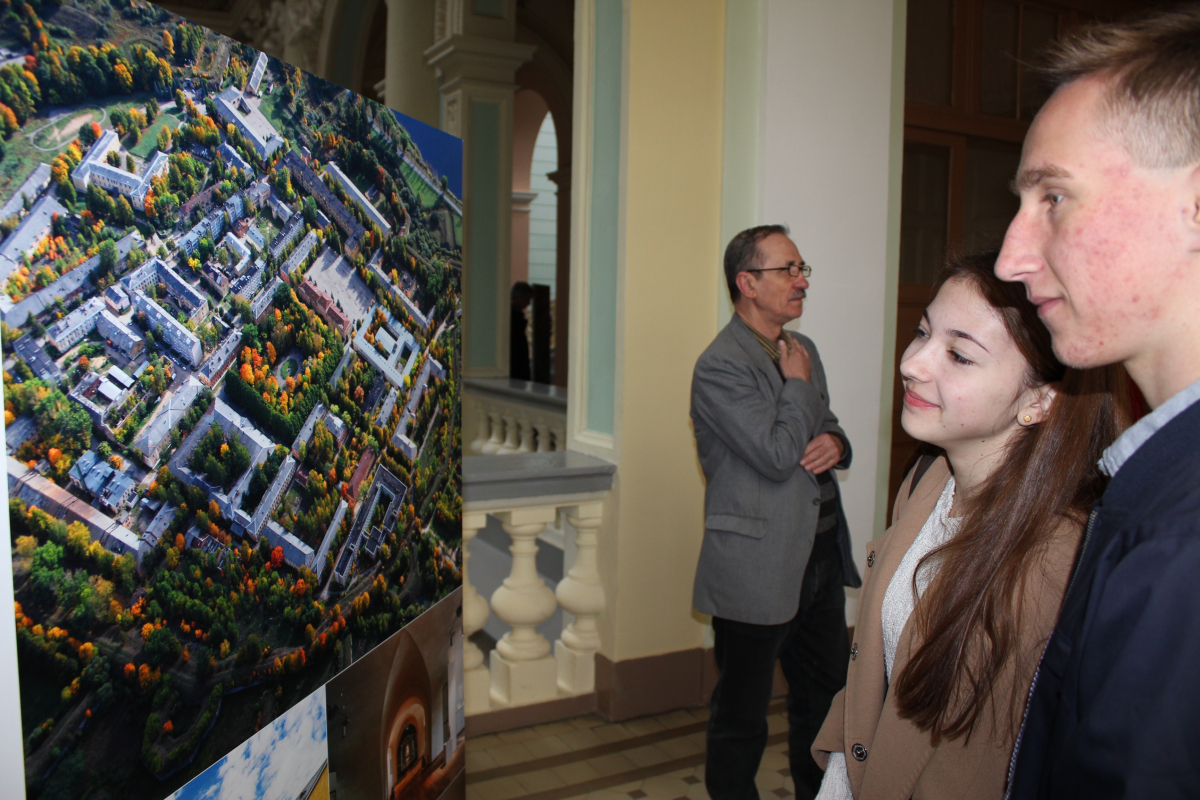The website of our University has already reported on this exhibition, where Juris Poikāns, Ambassador Extraordinary and Plenipotentiary of the Republic of Latvia in Ukraine, took part (he made a speech in Ukrainian at the opening оf the exhibition).It is entitled «State construction in Latvia in the 9th-21st centuries and the style of Modern in architecture: Riga and Latvia».
The guests from Latvia were welcomed by Professor Yuriy Bobalo, Lviv Polytechnic Rector. Ambassador Juris Poikāns, Gvido Princis, Chief Architect of Riga, Professor Uldis Sukovski, Dean of Riga Institute of Architecture, doctor Janis Krastins, Yulian Chaplinskyy, Chief Architect of Lviv, Professor Oleh Matviykiv, Vice-Rector for Education and International Relations of Lviv Polytechnic, Liliya Zhuk, Deputy Vice-Rector for Scientific Research of our University, participated in the meeting.
Architects of Riga and Lviv (most of them were from the Institute of Architecture) had an interesting conversation on the professional issues within the framework of the exhibition. Before giving you the gist of this conversation, we will present a brief geographic and historical reference.
The capital of Latvia, Riga, is the biggest city in the Baltic region. Its population, according to 2016 census, is 639,230 people. The city is situated on the banks of the River Daugava, not far from the place where it flows into the Gil fog Riga. Latvia was part of Russian empire for a long time. The USSR annexed Latvia according to the notorious Molotov-Ribbentrop Pact. On June 17, 1940, Soviet tanks appeared on the streets of Riga. The independent country became Latvian Soviet Socialist Republic. Thousands of nationally conscious Latvians were repressed by Stalin regime.
Hundreds of thousands of workers and engineers (mostly ethnic Russians) were sent to Latvia from all over the Soviet Union to reconstruct its industry and to create new branches. During the period between 1950 and 1980, the population of Riga increased 7 times!
On May 4, 1990, the Parliament of Latvian Soviet Socialist Republic adopted a Declaration on restoring the independence of Latvian Republic. On March 3, 1991, this document was supported by a referendum.
Riga is a great tourist attraction in Europe. Its central part is in the UNESCO world heritage list.
Oresta Remeshylo-Rybchynska, associate professor at the Department of Design and Architecture Fundamentals, was the moderator of Lviv and Riga architects’ professional conversation. She said,
– Gvido Princis, Chief Architect of Riga, was the first to speak. He talked about the conservation of priceless architecture heritage, about the way they manage to conserve the historic nucleus of the capital of Latvia, how the city developed in the Soviet times and what prospects new areas have. Later, our experts, who research similar issues of city planning and restoration, joined the conversation. For instance, I informed them that not so long ago, there was held a workshop on building in certain areas of Lviv at the Department of Urban Planning.
– We all know how it is done here. What does architecture experience of Latvians teach us?
– The architects of Riga also use insertion buildings in the central part of the city. However, they are striving to preserve the integrity of the architecture environment, so that there will be no aggressive interfering in the old parts, not to destroy the historic scope. For example, in Lviv, the historic scope around the monument to Adam Mickiewicz has been destroyed. It is essential to preserve the urban planning structure of the city. If the streets were narrow, we have to keep them narrow. It is very important to keep to the insulation requirements, so that multi-storied buildings do not keep the sun away from the neighbouring houses.
– Yulian Chaplinskyy, Chief Architect of Lviv, was present at this meeting…
– He visited Riga several times. He was invited as a member of the jury to some contests. Mr Chaplinskyy knows a lot of famous Latvian architects. Our guests were delighted to find it out. Riga sets an example of innovative creative projects in urban planning. My son, Adrian Rybchynskyy, is pursuing his PhD degree in Estonia at the moment. He asked what is being done in Riga to solve the problem of inner spaces, that is inners yards. Our guests answered that all yards are a private zone for their inhabitants. That is why architects can only suggest solutions for these territories. A lot of meetings with the inhabitants are held, so that they will understand what these inner spaces should look like and how they should be used.
There were other interesting questions from the professors of our department. Associate professor Serhiy Milchevych asked how the problem of advertising and the so called city lights is solved in the central part of the city. Chief Architect of Riga said that they work a lot on this. They try to prevent advertising dominating the architecture environment. Advertising should become an attraction of the city, as a small architecture form.
Professor Valentyn Bevz, Head of the Department of Restoration of Architectural and Artistic Heritage, Anton Kolomeytsev, associate professor of the Department of Architectural Design, Bohdan Hoy, associate professor of the Department of Architectural Environment Design, and students of the Institute of Architecture took part in the discussion.
Professor Janis Krastins delivered an interesting lecture on the style of Modern in the architecture of Latvia in the 19th -20th centuries. This topic was especially interesting for Tetyana Kazantseva, associate professor of the Department of Design and Architecture Fundamentals, since she is writing her doctoral thesis, which is connected to a certain degree with the style of Modern.
Yulian Chaplynskyy, Chief Architect of Lviv, underlined that there is a big problem of conserving architecture of the 19th-beginning of the 20th century, and Riga citizens’ experience is extremely valuable for us.
There was also a conversation with the Institute leadership. Our guests, Uldis Sukovski, in particular, expressed interest in establishing co-operation regarding participation of students from both educational institutions in developing joint projects, project contests. In general, our guests were pleasantly surprised that our students and professors know the history and theory of Latvian architecture so well.
Tetyana Kazantseva, associate professor of the Department of Design and Architecture Fundamentals, who teaches the History of Architecture, took part in the tour of Lviv together with our guests from Latvia. They were shocked to see how inconsiderate urban planning distorts the ancient city. Ms Kazansteva also mentioned the openness and kindness of our guests to the architectural community of Lviv. They invited Lviv architects to come to Riga, to participate in various conferences, symposia and exhibitions.
P.S. Our reporter talked to the guests about social and political issues. Latvia disapproves of Russian aggression in the east of Ukraine, as well as the annexation of the Crimea. A lot of wounded ATO soldiers are treated in the hospitals in Latvia. The problem of international relations is still very pressing. The Russian community initiated a referendum on giving the Russian language the status of the second official language in the country. However, this referendum was a complete failure. We also remembered the legendary Latvian radio sets «Spidola» and «Rafick» vans. These things are no longer produced. However, Latvia is one of the leading countries in Europe in producing agricultural goods, and is interested in co-operating with Ukraine in this sphere.
